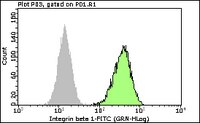Spatiotemporal control of phosphatidylinositol 4-phosphate by Sac2 regulates endocytic recycling.
Hsu, F; Hu, F; Mao, Y
The Journal of cell biology
209
97-110
2015
Show Abstract
It is well established that the spatial- and temporal-restricted generation and turnover of phosphoinositides (PIs) by a cascade of PI-metabolizing enzymes is a key regulatory mechanism in the endocytic pathway. Here, we demonstrate that the Sac1 domain-containing protein Sac2 is a PI 4-phosphatase that specifically hydrolyzes phosphatidylinositol 4-phosphate in vitro. We further show that Sac2 colocalizes with early endosomal markers and is recruited to transferrin (Tfn)-containing vesicles during endocytic recycling. Exogenous expression of the catalytically inactive mutant Sac2C458S resulted in altered cellular distribution of Tfn receptors and delayed Tfn recycling. Furthermore, genomic ablation of Sac2 caused a similar perturbation on Tfn and integrin recycling as well as defects in cell migration. Structural characterization of Sac2 revealed a unique pleckstrin-like homology Sac2 domain conserved in all Sac2 orthologues. Collectively, our findings provide evidence for the tight regulation of PIs by Sac2 in the endocytic recycling pathway. | 25869669
 |

















